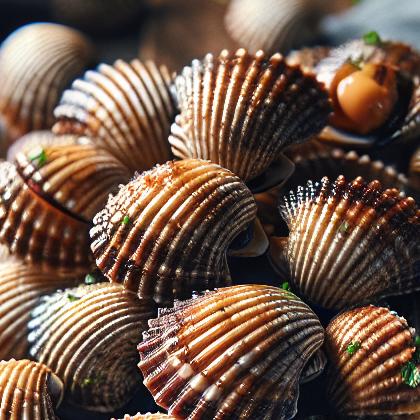Showing results for 'Cockles'
close
Cockles

A cockle is a small, edible, saltwater clam, a marine bivalve mollusc. Although many small edible bivalves are loosely called cockles, true cockles are species in the family Cardiidae. True cockles live in sandy, sheltered beaches throughout the world. The distinctive rounded shells are bilaterally symmetrical, and are heart-shaped when viewed from the end. Numerous radial evenly-spaced ribs are a feature of the shell in most but not all genera (for an exception, see the genus Laevicardium, the egg cockles, which have very smooth shells).
Cockles Pairs With:
Food Item
Flavor Affinity Level
Cockles Properties:
| Food Property | Type | Description |
|---|---|---|
| Flavor Profile | Umami | Cockles have a savory and deeply flavorful taste due to the presence of glutamate. |
| Salty | Cockles have a salty taste due to the natural salt content in the shellfish. | |
| Texture | Tenderness | Cockles have a tender texture when cooked properly, making them easy to chew. |
| Nutritional Value | Macronutrients | Cockles are low in fat and calories but high in protein, making them a nutritious option for a seafood dish. |
| Micronutrients | Cockles are a good source of vitamins and minerals, including iron and zinc. | |
| Color | Natural Pigments | Cockles have a natural pinkish coloration when cooked, adding visual appeal to dishes. |
| Aroma | Volatile Compounds | Cockles have a distinctive aroma that is slightly sweet and briny, reminiscent of the sea. |
| Cooking Behavior | Water Retention | Cockles have a high water retention capacity, making them juicy and flavorful when cooked. |
| Heat Conductivity | Cockles cook quickly and evenly due to their high heat conductivity, resulting in a tender texture. | |
| Oil Absorption | Cockles do not absorb much oil when cooked, making them a healthy cooking option. |
Food Pairing App - Version 1.2.0
